This talk discusses the resurgence of Machine Learning and neural networks from multiple digital perspectives, including:
- product & design,
- iterative delivery,
- organisational design and knowledge management, and
- governance and risk.
I chose to use “intuition” to distinguish ML’s capability for pattern recognition in narrow tasks from other descriptions of intelligence. Find slides here.
Outline
Machine intuition, ftw
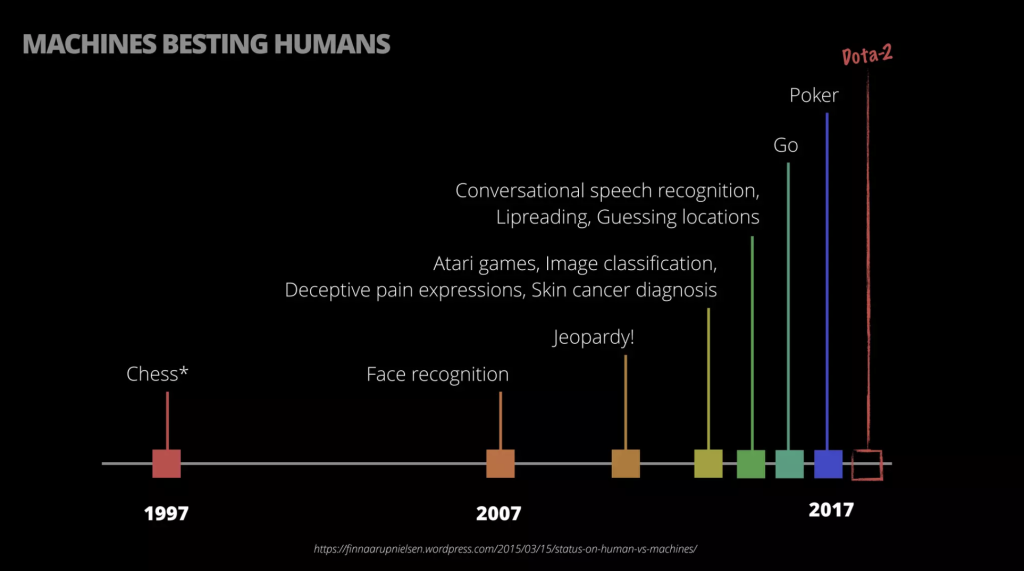
- Performance leaps in translation, autonomous vehicles, and negotiations
- Besting humans in video games, go and poker
What just happened?
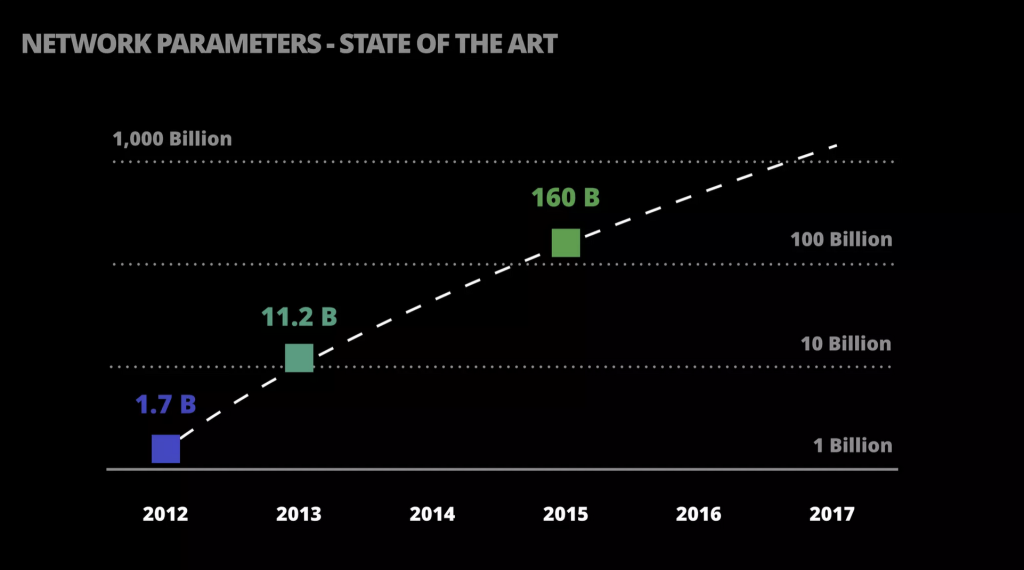
- Neural networks, how they work, and their history
- Recent confluence of factors:
- Data
- Compute
- Network designs
So, what’s next?
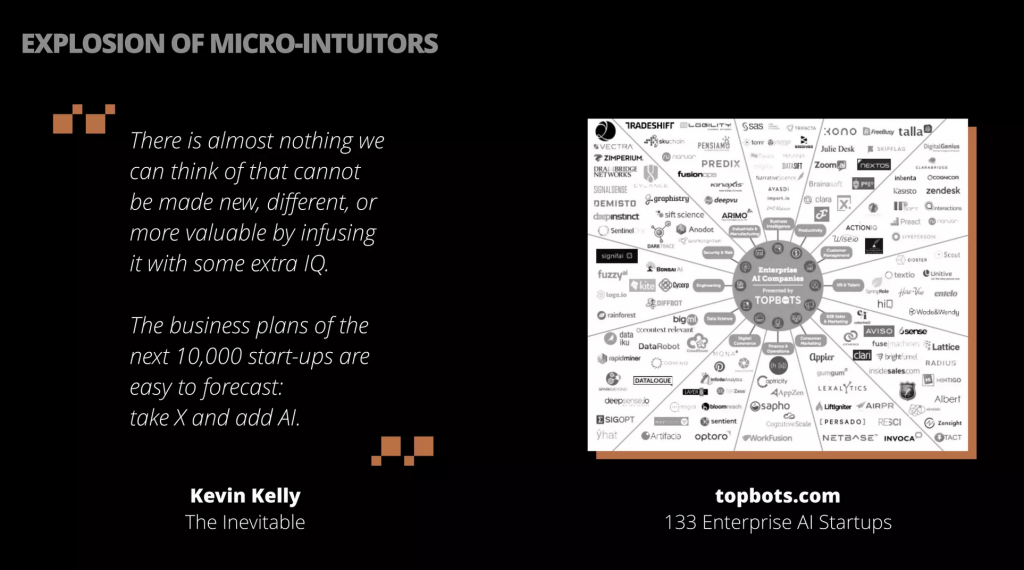
- Explosion of micro-intuitors
- Humans and machines complementing each other
- Humans: fast learners and flexible thinkers
- Machines: wide learners and scalable thinkers
- Distributed machine intuition
- Edge inference for speed, efficiency and privacy
- Federated cloud training for scale and privacy
- Pro-active recognition of risks
- More decision-making tasks outsourced, like more computational tasks have already been outsourced
Designing products with intuition
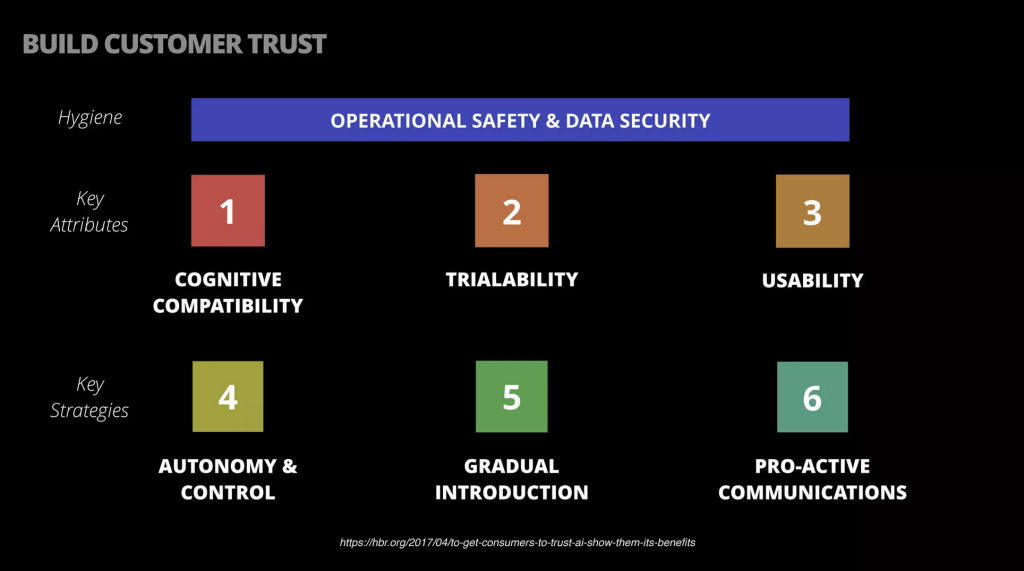
- Customer perception and trust (Ellen Enkel)
- Operational safety & data security as a hygiene factor
- An application that makes sense, it usable, and testable
- Autonomy & control, pro-active communication, gradual introduction
- Take a human-centred approach (Google PAIR)
- Machine learning doesn’t solve everything
- Prototype with real people instead of an algorithm
- Design with the system’s failure in mind
- Get feedback, forever
- Choose the right problems – various canvas techniques for elaboration
- Consider structuring business scenarios as gameplay for machines
Developing technology with intuition
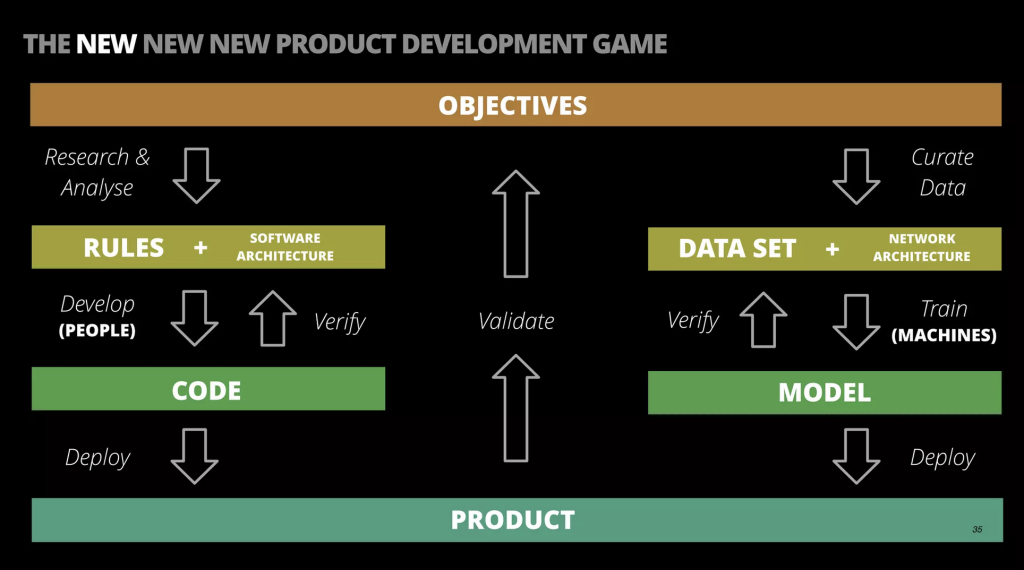
- Avoid simply stirring the pile of linear algebra
- The new new new product development game
- Inner verification loop, aka building the thing right
- From analysis driving coding to satisfy tests
- To curated data driving model learning to satisfy metrics
- Wrapped in the good old fashioned outer validation loop, aka building the right thing with customer feedback
- Inner verification loop, aka building the thing right
- Data curation considerations
- Model training considerations
- Other success factors:
- Diverse teams
- Role of data science
- Architecture
- Continuous delivery
- Choice of tooling
- A good task to have?
Building organisations with intuition
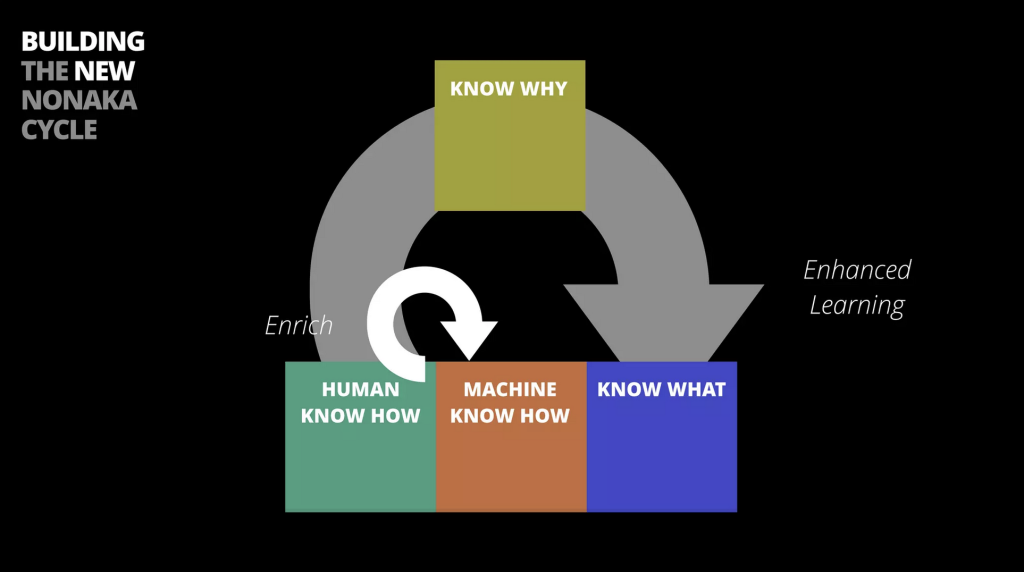
- Introduce a basic knowledge classification system
- Know what – explicit, rule-based
- Know how – tacit, feel-based
- Know why – explicit, cause-based
- Introduce a simplified Nonaka cycle of organisational learning with these types knowledge – repeatedly applying the what leads to deep knowledge of the how which provides the insight for the why, and the next round of what
- Now add machine “know how” alongside human “know how”
- If we rely too much on machine “know how”, we lose the human “know how”
- Then lose the human “know why”
- Then lose the improved human “know what”
- So we must deliberately design for learning when deploying machine intuition in organisations
- And focus on augmenting humans (or complementing, as above) – machines bettering humans, not just besting humans
- Consideration of changing job design, from cognitive hammers to cognitive nail guns
Managing risk & ethics with intuition
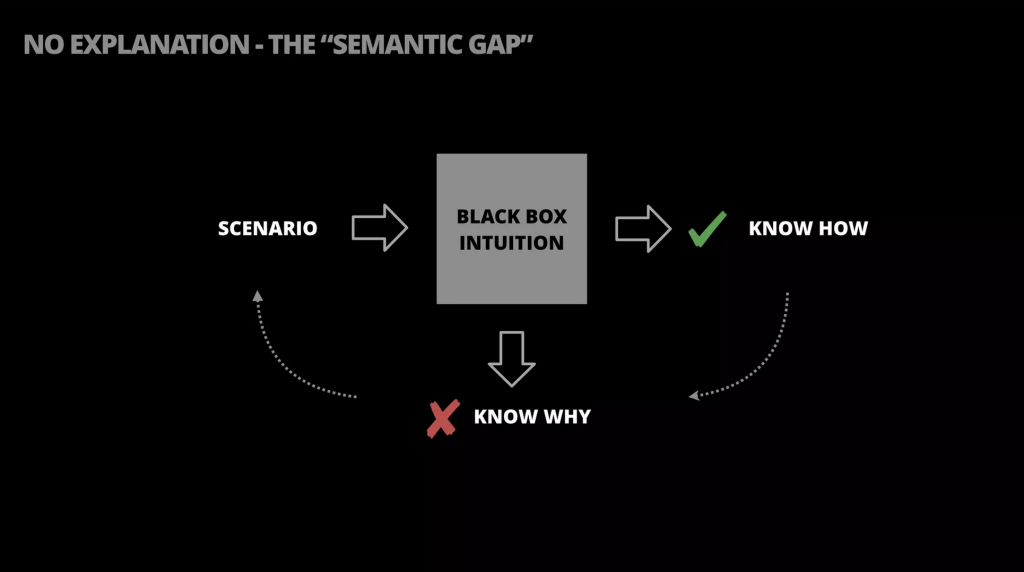
- Some machine failure modes
- Training set bias
- Spurious correlations
- Compare to black swans and pareidolia in humans
- Opaque box nature of decisions
- “Know how” but not “know why”
- Potential societal implications (SciAm)
- Democracy 2.0, or
- Feudalism 2.0
- Some responses
- Weapons of Math Destruction
- Align with customer objectives
- Avoid or reduce opaque models
- Don’t naively port solutions between applications
- Avoid applications that create their own reality through feedback loops
- GDPR right to explanation
- Corporate mission and values aligned position on avoiding harm
- Weapons of Math Destruction
Conclusion
- Machines outperforming humans in narrow tasks
- Due to a confluence of recent developments; innovation continues
- Potential improvements have significant implications for product development and organisational design
- Potentially huge benefits for society, but risks to be managed
- Better understanding of machine intuition is the key to all this
